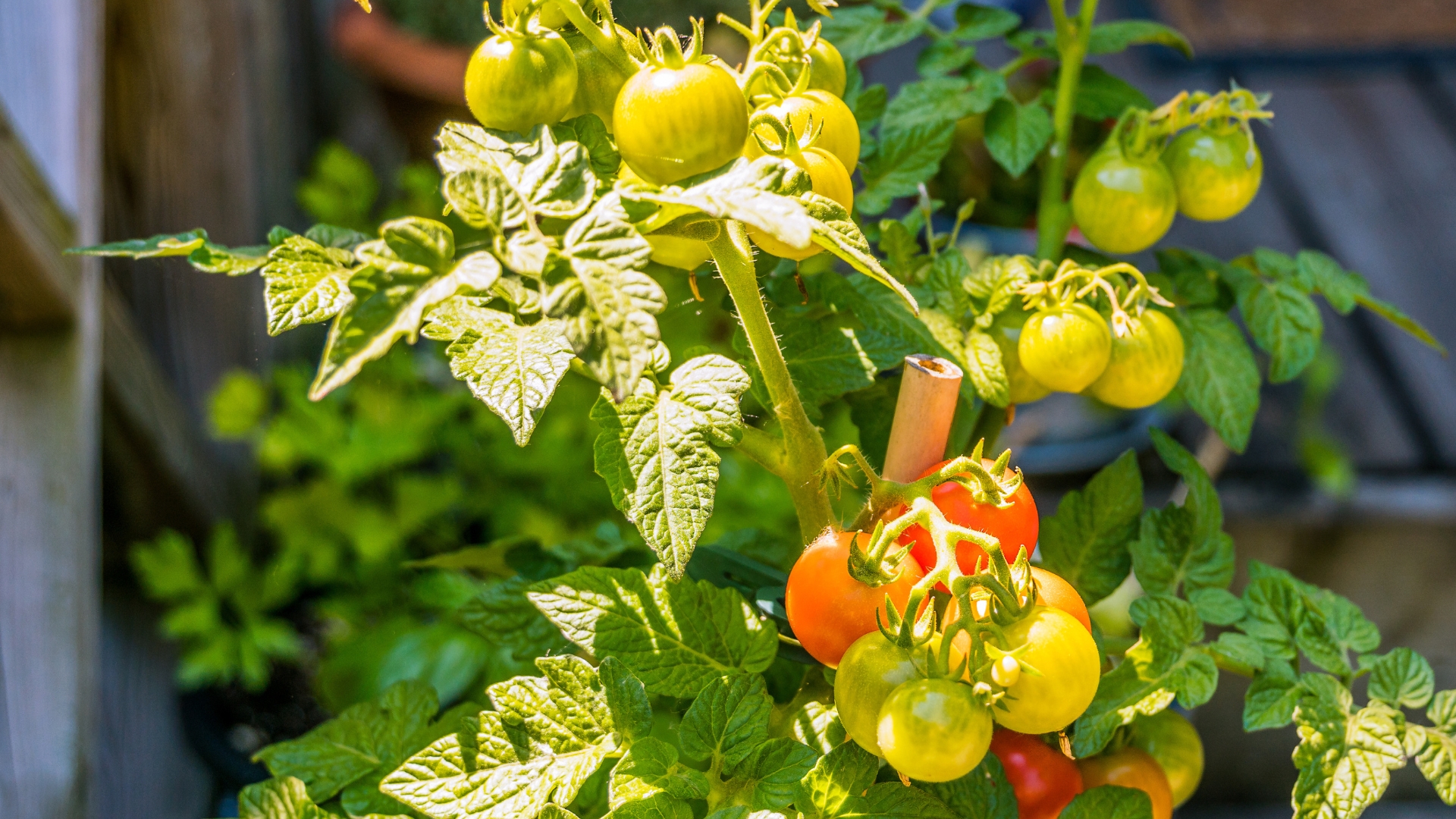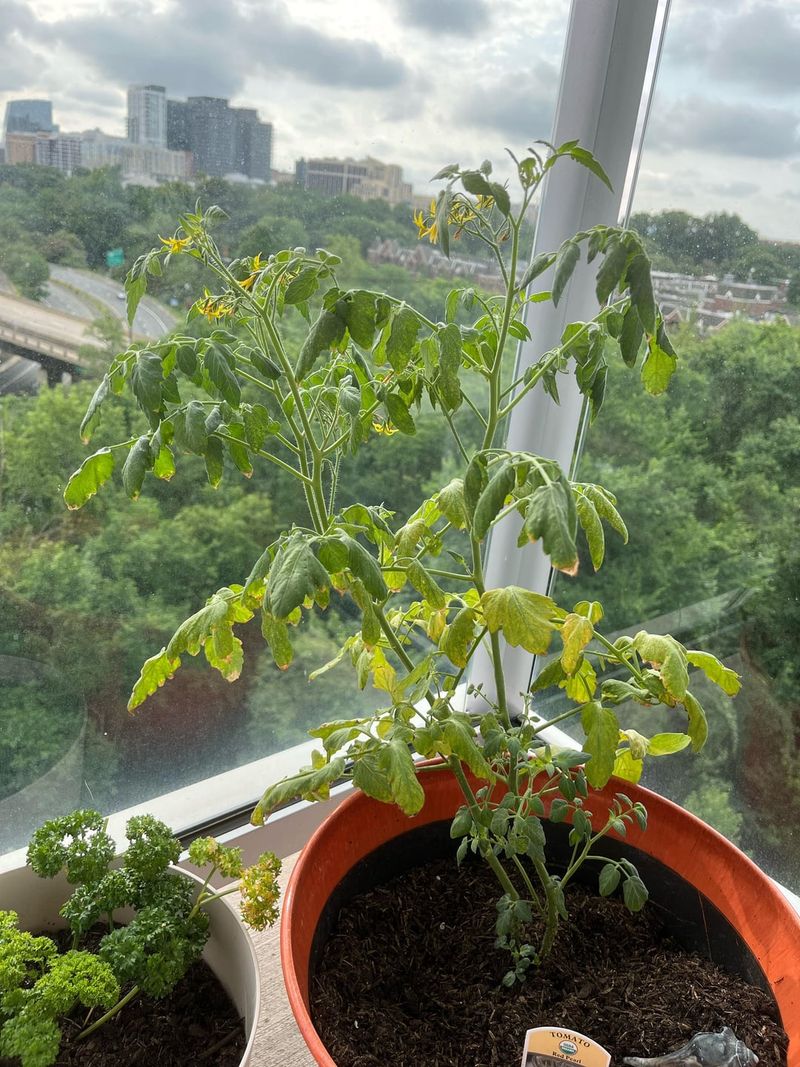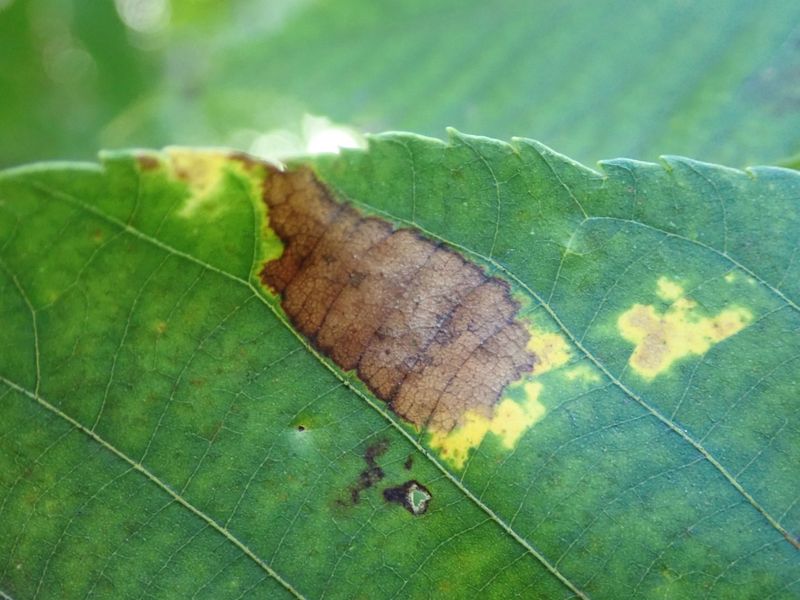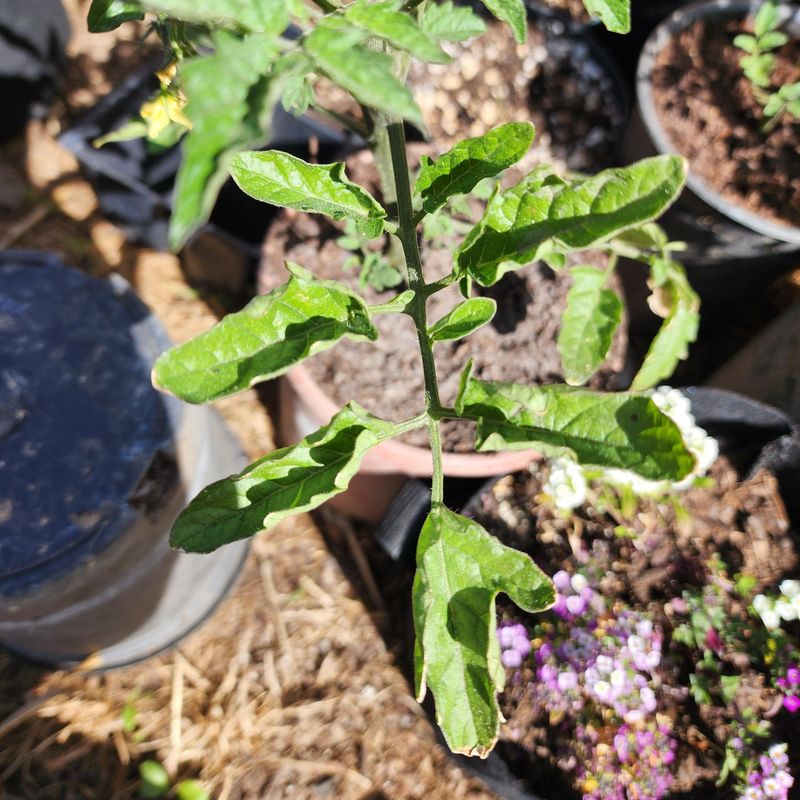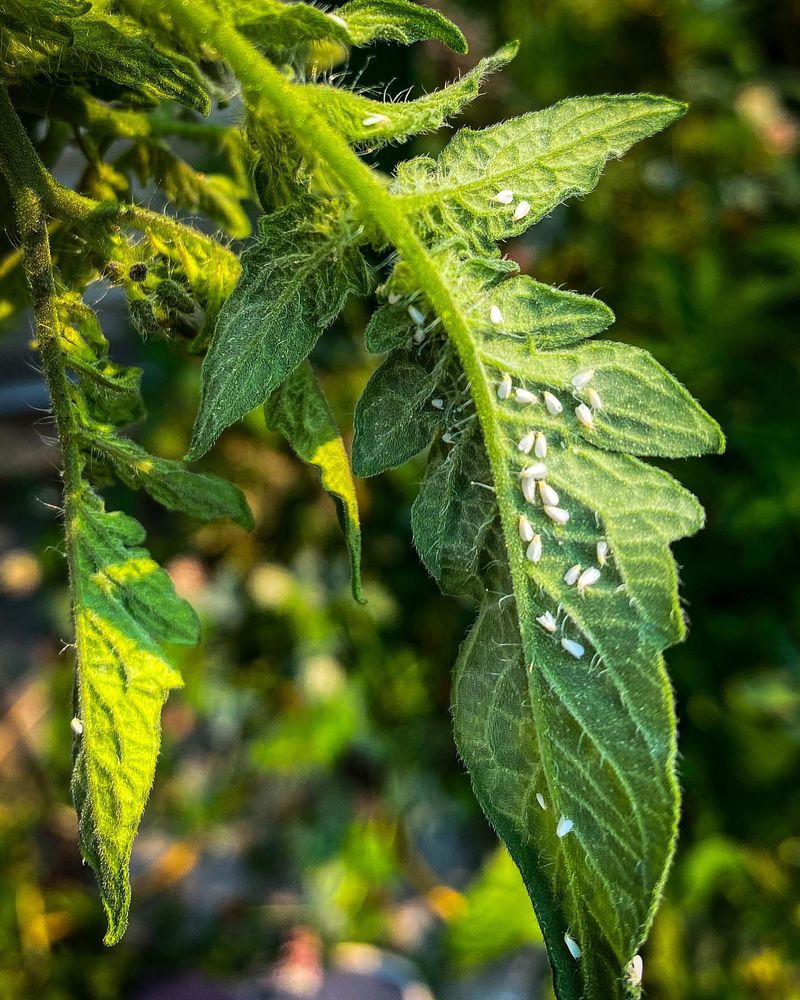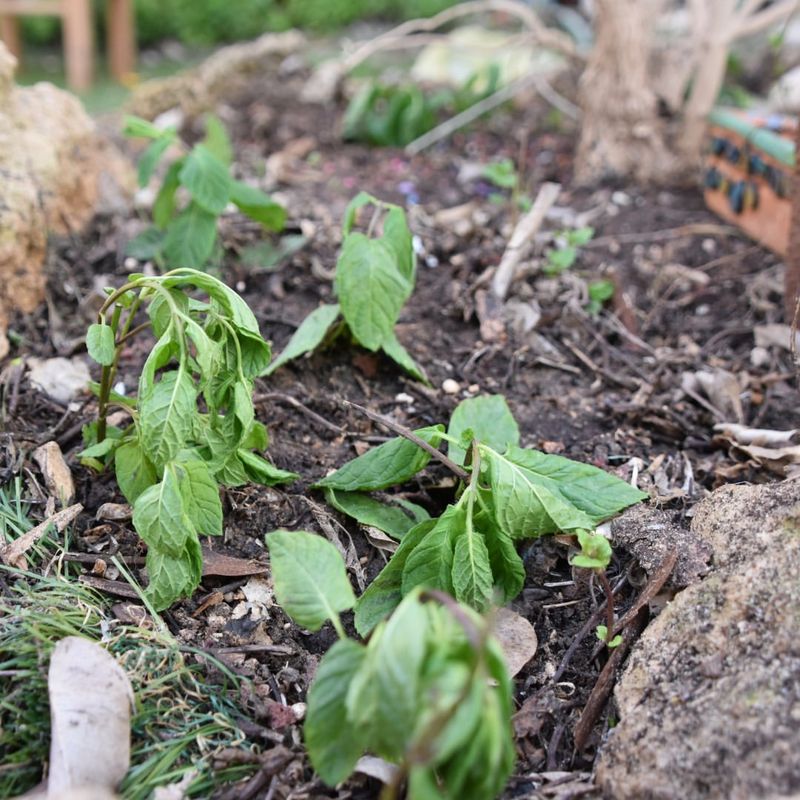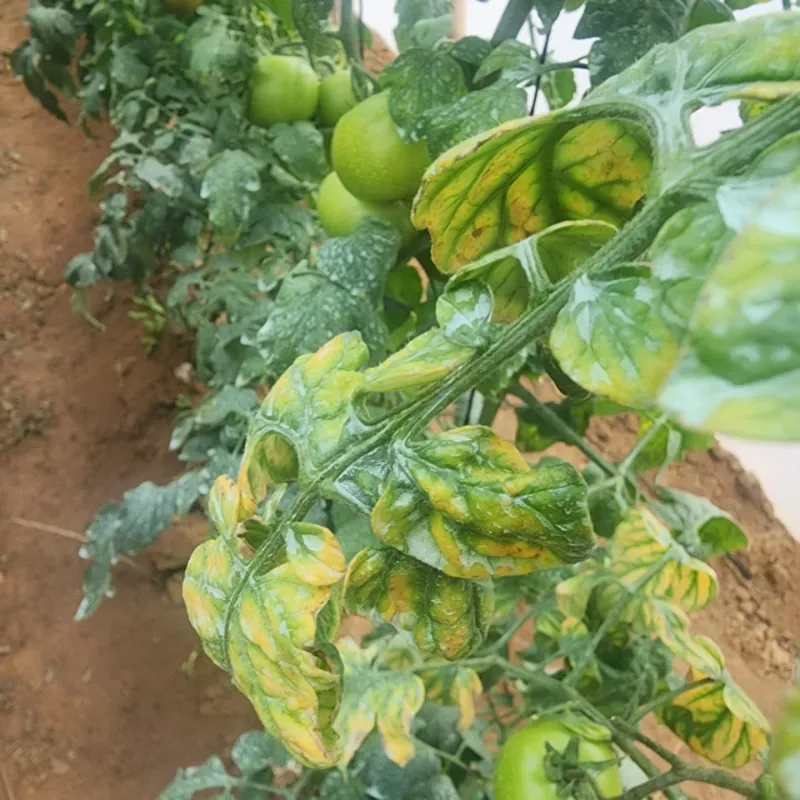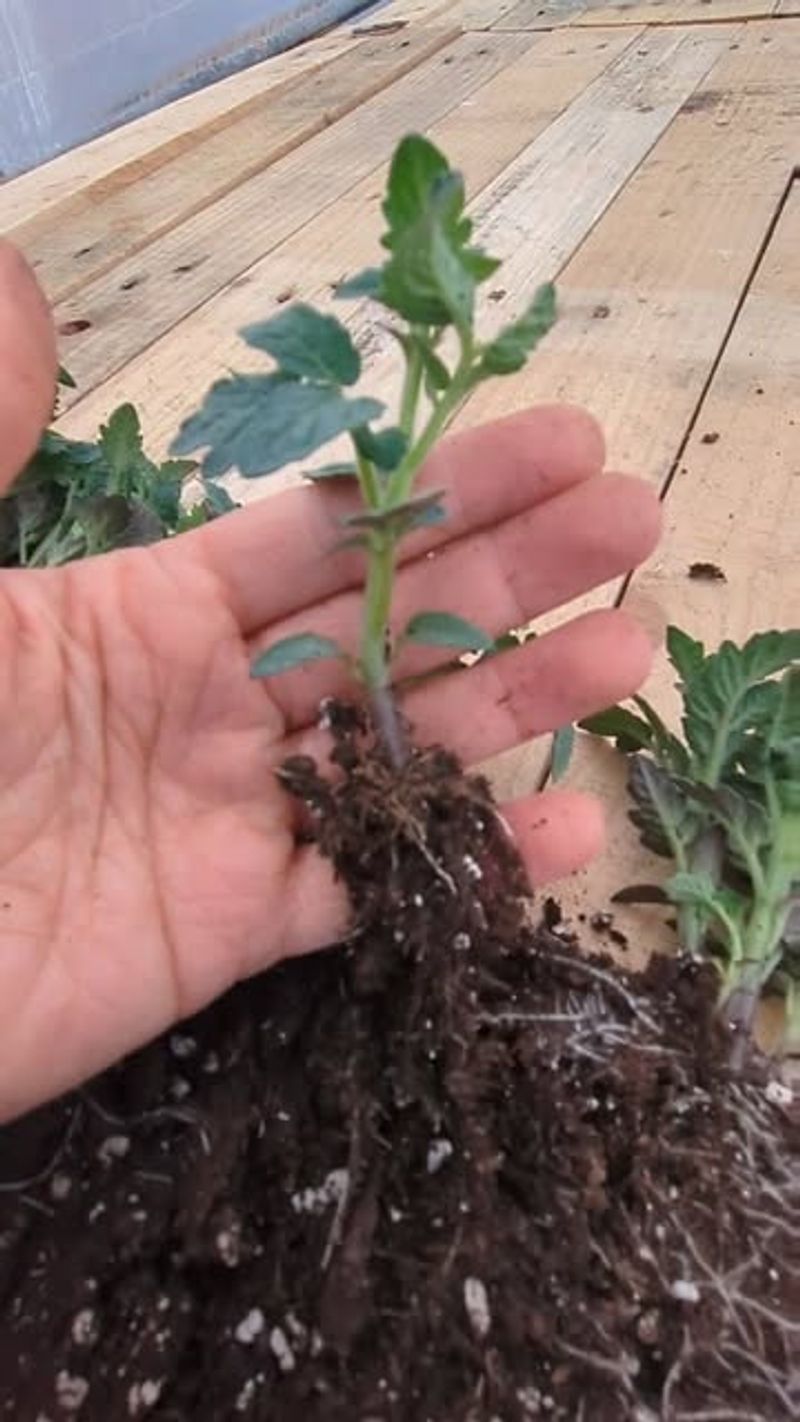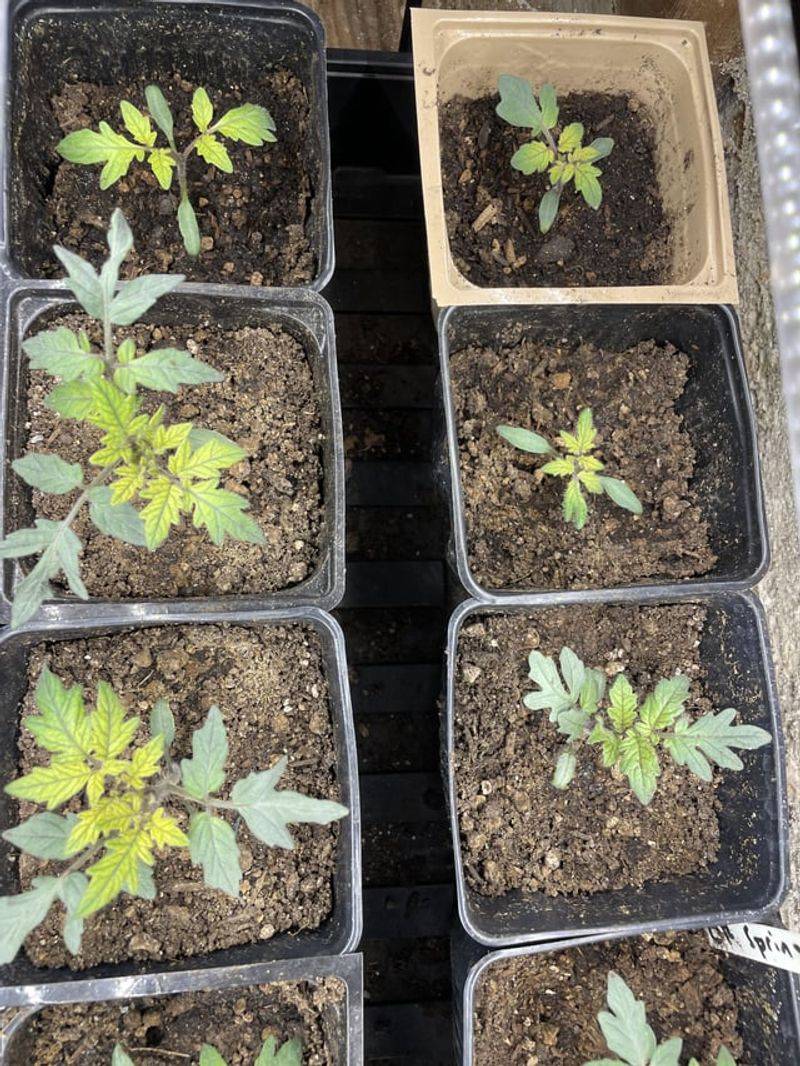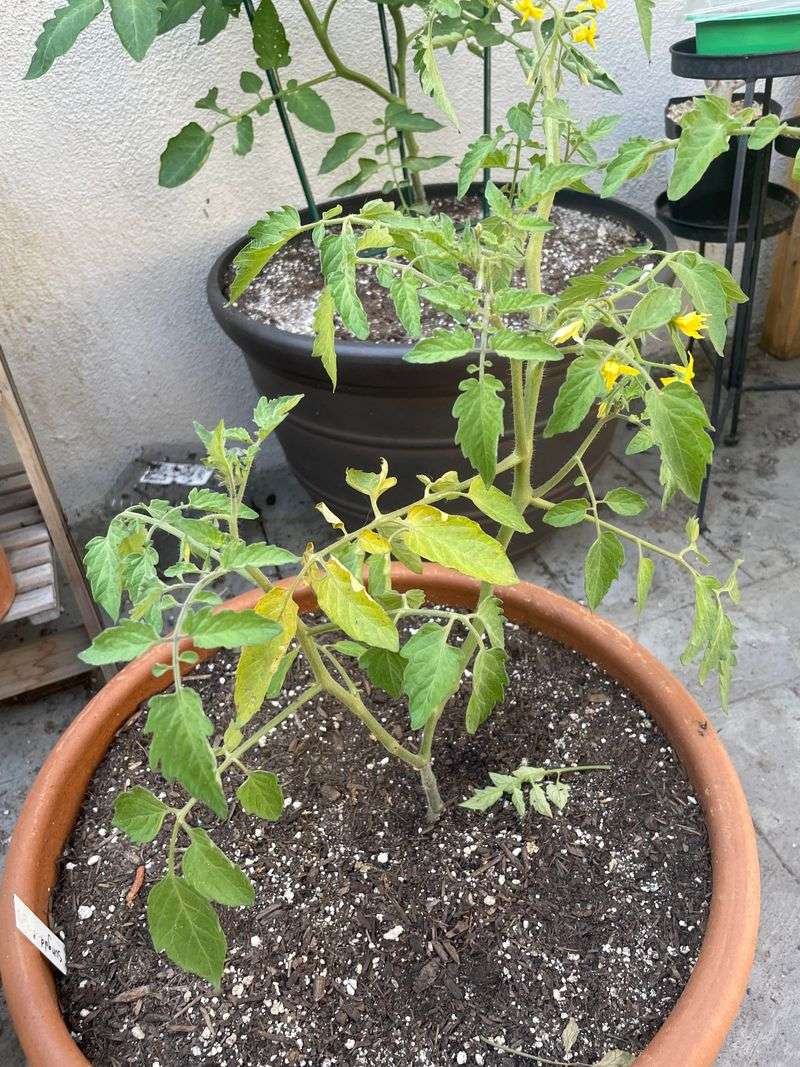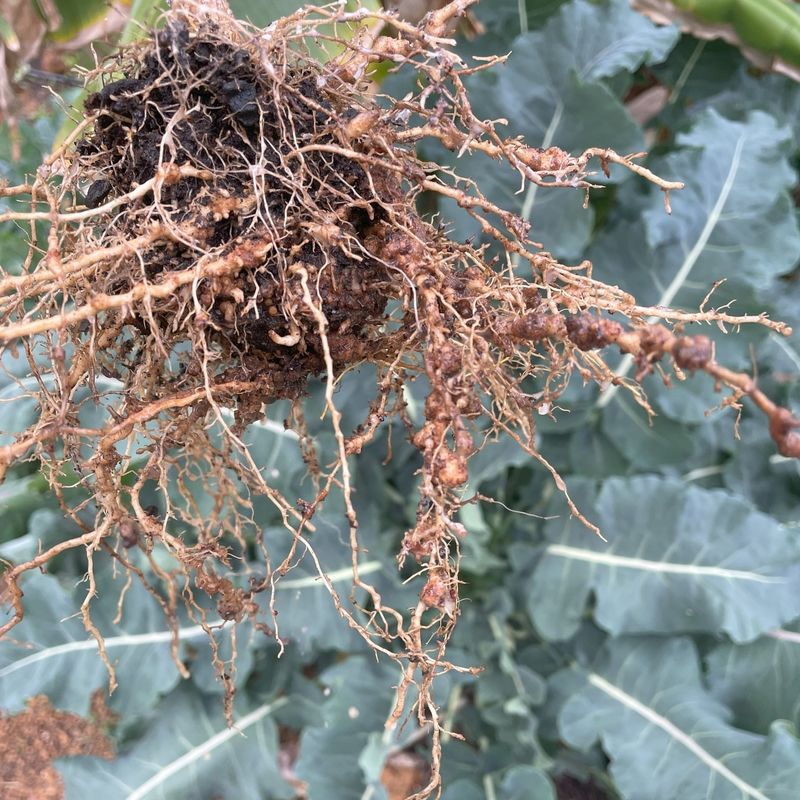Yellow tomato leaves are popping up all over Georgia gardens right now, and it’s enough to make any grower’s heart skip a beat. I’ve seen my own plants turn pale and droopy, and it’s frustrating when you don’t know why.
The causes can range from simple watering mistakes to sneaky diseases hiding in the soil. Knowing what’s behind those yellow leaves is the first step to saving your crop.
Let’s dig into the most common reasons and get those tomatoes back to their vibrant green!
1. Nitrogen Deficiency
The Georgia heat can accelerate nutrient depletion in garden soil. Lower leaves turn yellow first, then gradually move upward as the plant struggles to relocate nitrogen to new growth.
A quick soil test from your local Georgia extension office can confirm this common issue. Add some balanced fertilizer with higher first numbers to restore those lush green leaves.
2. Overwatering
Those afternoon thunderstorms rolling through Georgia combined with morning watering can drown your tomatoes. Roots sitting in soggy soil can’t breathe properly, causing leaves to yellow from the bottom up.
Many Georgia gardeners mistakenly add more water when they see yellowing, making the problem worse. Check soil moisture by inserting your finger two inches deep before watering again.
3. Fungal Disease
Georgia’s humid climate creates perfect conditions for fungal pathogens like early blight. Yellow spots with dark concentric rings appear on lower leaves first, spreading upward as the infection progresses.
The state’s combination of warmth and moisture makes fungal issues almost inevitable. Apply a copper-based fungicide approved for Georgia gardens and remove affected leaves promptly to prevent spread.
4. Bacterial Infection
Bacterial spot thrives in Georgia’s warm, wet conditions. Small water-soaked spots appear on leaves before expanding and turning yellow with dead brown centers.
Georgia gardeners often confuse this with insect damage at first glance. The bacteria splash onto plants during rainstorms, so avoid working with wet plants and consider copper sprays as a preventative measure.
5. Pest Infestation
Sap-sucking insects like aphids and whiteflies thrive in Georgia’s long growing season. These tiny pests drain chlorophyll from leaves, leaving behind yellow mottling and stunted growth.
Georgia’s mild winters allow pest populations to build up year after year. Check under leaves for tiny insects, and introduce beneficial predators like ladybugs or apply insecticidal soap for natural control.
6. Heat Stress
Georgia’s scorching summer temperatures can push tomato plants beyond their comfort zone. When thermometers climb above 90°F consistently, leaves yellow and curl upward as a protective response.
Many varieties struggle during July and August in the Peach State. Provide afternoon shade using row covers or plant near taller crops to shield tomatoes from the intense southern sun.
7. Herbicide Drift
Weed killers applied nearby can drift onto your tomato plants in Georgia gardens. Even small amounts cause distinctive yellowing, twisted growth, and cup-shaped leaves that signal chemical damage.
Georgia’s breezy conditions can carry herbicides surprising distances. Avoid spraying on windy days and create buffer zones between treated areas and your sensitive vegetable garden to prevent accidental exposure.
8. Virus Infection
Tomato yellow leaf curl virus spreads rapidly through Georgia gardens via whitefly vectors. Infected plants develop distinctive upward-curling yellow leaves and stunted growth that can’t be reversed.
Georgia’s extended growing season gives viruses more time to spread between plants. Remove infected specimens immediately and control whitefly populations to protect neighboring plants from this devastating disease.
9. Magnesium Deficiency
Georgia’s leached soils often lack sufficient magnesium for healthy tomato growth. Yellowing begins between leaf veins while veins remain green, creating a distinctive marbled appearance on older leaves first.
The acidic soil common throughout Georgia can worsen this deficiency. A foliar spray of Epsom salts (one tablespoon per gallon) provides quick relief while soil amendments work more slowly.
10. Potassium Shortage
Heavy fruit production depletes potassium reserves quickly in Georgia’s sandy soils. Leaf edges turn yellow then brown while centers remain green, often appearing scorched or burned around the margins.
Georgia’s frequent summer rains can wash away this essential nutrient. Apply a fertilizer with higher last numbers (like 5-10-15) when plants begin flowering to support fruit development and prevent yellowing.
11. Root Damage
Georgia gardeners often disturb tomato roots while weeding or cultivating. Even minor root damage reduces nutrient uptake, causing scattered yellow leaves throughout the plant as it struggles to recover.
The state’s clay soils can compact easily, further stressing damaged root systems. Apply a thick mulch layer around plants to suppress weeds and eliminate the need for cultivation near sensitive roots.
12. Soil pH Imbalance
Georgia’s naturally acidic soils often fall below the ideal pH range for tomatoes. When soil becomes too acidic (below 6.0), nutrients become less available, resulting in overall yellowing and poor growth.
Many Georgia counties have soils with pH as low as 5.0. A simple soil test can confirm this issue, and applying agricultural lime in fall allows time for pH adjustment before next season’s planting.
13. Transplant Shock
Moving young tomato plants from protected environments to Georgia’s intense outdoor conditions causes stress. Yellowing of older leaves often signals the plant’s struggle to establish in new surroundings.
Georgia’s temperature swings between day and night can worsen shock symptoms. Harden off seedlings gradually by exposing them to outdoor conditions for increasing periods before permanent planting to minimize yellowing.
14. Iron Deficiency
Young tomato leaves turn yellow while veins stay green when iron is lacking in Georgia gardens. This distinctive pattern, called interveinal chlorosis, appears first on new growth at the top of plants.
Georgia’s alkaline water can contribute to this problem despite acidic soil. Apply chelated iron products specifically formulated for vegetable gardens to quickly green up those yellow leaves without waiting for soil amendments.
15. Nematode Infestation
Microscopic root-knot nematodes thrive in Georgia’s warm soils year-round. These tiny worms attack roots, forming knots that block nutrient flow and cause patchy yellowing throughout the plant.
Sandy areas of Georgia provide perfect habitat for these destructive pests. Dig up a struggling plant and check for telltale swollen nodules on roots, then rotate next season’s tomatoes to a different area to break the nematode lifecycle.

